I still remember the exact moment I realized I’d been playing Underwater Cities all wrong. It was game night at Carl’s place, and after several plays where I’d focused entirely on grabbing the “best” actions regardless of card colors, I watched in bewilderment as Miguel thoroughly destroyed us all. His score nearly doubled mine, and the reason was painfully obvious in retrospect – he’d built his entire strategy around color matching.
“You can’t just take good actions,” he explained after seeing my confused expression. “You need to take good actions that match your cards.” Such a simple insight, yet it completely transformed how I approached the game. Underwater Cities presents a fascinating strategic puzzle through its core mechanism: you place a worker to select an action, then play a card from your hand.
If the card color matches the action space color, you get both the action effect and the card effect. If they don’t match, you only get one or the other. This color-matching constraint creates a constant tension that shapes every decision throughout the game.
After about forty plays across various player counts and expansion content, I’ve come to see this color-matching constraint not as a limitation but as the central strategic puzzle that gives the game its depth. Managing this constraint effectively requires balancing immediate needs against future possibilities, creating a decision space that remains engaging even after dozens of plays. The most important realization for improving your Underwater Cities play is that the value of matching effects vastly outweighs the value of individual actions or cards in isolation.
A mediocre action paired with a matching mediocre card often delivers more value than a strong action without a match. This multiplicative relationship means you should evaluate potential plays based on their combined impact rather than selecting the seemingly strongest individual components. My typical approach to hand management now revolves around identifying potential color matches first, then evaluating which of those matches would provide the most immediate benefit to my current board state.
This represents a complete reversal from my early games, where I would identify my most pressing need and then hunt for the appropriate action, regardless of matching potential. The timing of when to prioritize matching over action value creates another interesting decision point. In early rounds, I’ve found that securing key matching plays for economy-building actions generally outweighs grabbing high-value non-matching actions.
The compounding benefits of early resource generation through matched plays typically outpaces the immediate advantages of strong non-matching plays. Linda (my wife and fiercest Underwater Cities competitor) beautifully demonstrated this principle in our last game. While I grabbed several powerful non-matching building actions in the first epoch, she consistently took slightly weaker actions that matched her card colors.
By mid-game, her economy was humming along at nearly twice my production rate, creating an advantage I never managed to overcome. The distribution of action space colors on the board creates another strategic consideration. Green and yellow spaces are more plentiful than red ones, making those colors generally more flexible for matching purposes.
This distribution suggests that red cards should be evaluated more critically, as your opportunities to match them will be more limited and competitive. I’ve developed what Miguel mockingly calls my “color opportunity cost calculation” – mentally tracking the current value of each color based on available action spaces, cards in hand, and remaining workers. This ongoing evaluation helps prioritize when to focus on matching and when to prioritize specific high-value actions regardless of matching potential.
The expansion of available actions in later rounds creates another interesting dynamic in the matching constraint. As additional action spaces open up, the opportunity cost of taking non-matching actions decreases. This sometimes justifies pivoting from a strict matching focus in early rounds to a more opportunistic approach in later epochs, where specific high-value actions might outweigh matching considerations.
My breakthrough game came when I stopped viewing the color matching as my primary goal and instead saw it as a constraint to be managed within a broader strategic framework. This shift in perspective led to more nuanced decision-making where I would intentionally take non-matching actions when the individual action value sufficiently outweighed the lost matching opportunity. Card drafting adds another layer to this puzzle.
When selecting cards during the drafting phase, the tendency for new players is to simply take the “best” cards in isolation. More experienced players evaluate cards partially based on their color’s matching potential with actions they’re likely to need in upcoming rounds. I now find myself regularly taking objectively weaker cards simply because their color creates more valuable matching opportunities with actions central to my strategy.
The asymmetric starting conditions from metropolis tiles create unique considerations for color matching priorities. Your initial metropolis often suggests strategic directions that pair more naturally with certain action types, which should influence your card selection and matching priorities from the earliest rounds. Recognizing and adapting to these starting asymmetries separates experienced players from novices who apply one-size-fits-all approaches to the matching constraint.
Beth demonstrated this beautifully in a recent game where her starting metropolis provided significant benefits for kelp production. Rather than applying a generic strategy, she immediately prioritized green cards and actions, creating powerful matching plays that leveraged her starting advantage. By mid-game, her kelp engine was generating resources at a rate none of us could match.
Player count significantly impacts optimal approaches to the color matching constraint. In two-player games, competition for specific action spaces is less intense, allowing more focus on creating optimal matches. With four players, key action spaces become hotly contested, sometimes forcing you to take suboptimal matches or forego matching entirely to secure critical actions before opponents.
I learned this lesson through painful experience in our first four-player game. My carefully planned matching strategy collapsed when Ryan repeatedly claimed action spaces I’d been counting on, forcing me into less efficient plays. Adapting to this higher competition requires more flexibility in matching priorities and greater emphasis on alternative paths when preferred matches become unavailable.
The temporal rhythm of Underwater Cities creates interesting considerations for the matching constraint. In early rounds, production actions typically provide greater long-term value, making matches with these actions particularly powerful. Mid-game shifts toward expansions and connections, while late-game often emphasizes special cards and final scoring optimizations.
Your matching priorities should evolve alongside this shifting focus, rather than remaining static throughout. Carl’s approach exemplifies this temporal awareness. He aggressively pursues matching production actions in the first epoch, transitions to matching building and expansion actions in the second, and focuses on matching special card and final scoring actions in the third.
This evolving approach to the matching constraint consistently yields stronger results than rigid strategies that maintain the same matching priorities throughout the game. Card management and hand cycling create another dimension to the matching puzzle. Since your matching options are constrained by the cards in hand, the ability to cycle through cards quickly can dramatically increase your matching potential.
Actions and effects that allow additional card draws or plays can create powerful combo opportunities that transcend the normal limitations of the matching constraint. My most successful games have featured what my group calls “cycling synergy” – combinations of effects that allow me to rapidly move through cards, dramatically increasing the likelihood of having appropriate colors for valuable matches. This approach requires some initial investment in card-drawing capabilities but typically pays substantial dividends through improved matching efficiency throughout the game.
Special cards that provide ongoing effects introduce another consideration to the matching equation. These cards often provide benefits that compound over multiple rounds, making their successful deployment through matching particularly valuable. I’ve found that securing matches for these high-impact special cards frequently justifies taking otherwise suboptimal action spaces, as their long-term value outweighs the immediate efficiency loss.
Ryan has mastered what he calls “special card prioritization” – identifying high-impact special cards early and structuring his entire action selection approach around successfully deploying them through color matches. This sometimes means accepting short-term inefficiencies to secure the long-term advantages these cards provide when successfully matched. The balance between specialization and diversification creates another interesting tension in managing the matching constraint.
Specializing in particular colors can increase your matching consistency but may limit your strategic flexibility. Diversifying gives you more options but potentially reduces your matching efficiency. Finding the right balance between these approaches based on the specific game state represents one of Underwater Cities’ most interesting strategic puzzles.
After dozens of plays, I’ve found that moderate specialization – focusing primarily on two colors with some flexibility in the third – typically provides the best balance. This approach maintains reasonable matching consistency while preserving sufficient strategic adaptability to respond to changing game states and opponent actions. The interaction between the matching constraint and the asymmetric production benefits of different underwater city locations creates yet another strategic dimension.
Certain city locations naturally pair better with specific action types, suggesting color priorities that align with your developing board position. As your city expands, your optimal matching priorities may shift to leverage these location-specific benefits. Miguel exemplifies this awareness of board position in his matching priorities.
He carefully evaluates how each potential city expansion would interact with his card color distribution, sometimes accepting suboptimal immediate placements to create more valuable matching opportunities in subsequent rounds. This integration of spatial planning with color matching consistently produces impressive results. After exploring all these considerations across dozens of games, I’ve concluded that mastering Underwater Cities’ action selection under the color matching constraint isn’t about adhering to fixed priorities but developing dynamic evaluation skills that balance immediate needs, long-term strategy, and adaptive response to changing game states.
The matching mechanism creates a constantly evolving puzzle where the value of each potential play depends entirely on the surrounding context. This depth, hidden beneath the game’s relatively straightforward rules, explains why it remains one of our most-played titles years after purchase. Each game presents a unique optimization puzzle with its own solution, rewarding repeated play without becoming formulaic.
And yes, I still occasionally get trounced by Miguel’s seemingly effortless matching efficiency. But the gap has narrowed considerably since that first humbling experience, and these days I occasionally manage to edge out victories through careful management of the color matching constraint that once seemed so restrictive. In Underwater Cities, as in most great games, the limitations aren’t obstacles to enjoyment – they’re the very puzzle that makes the experience worthwhile.

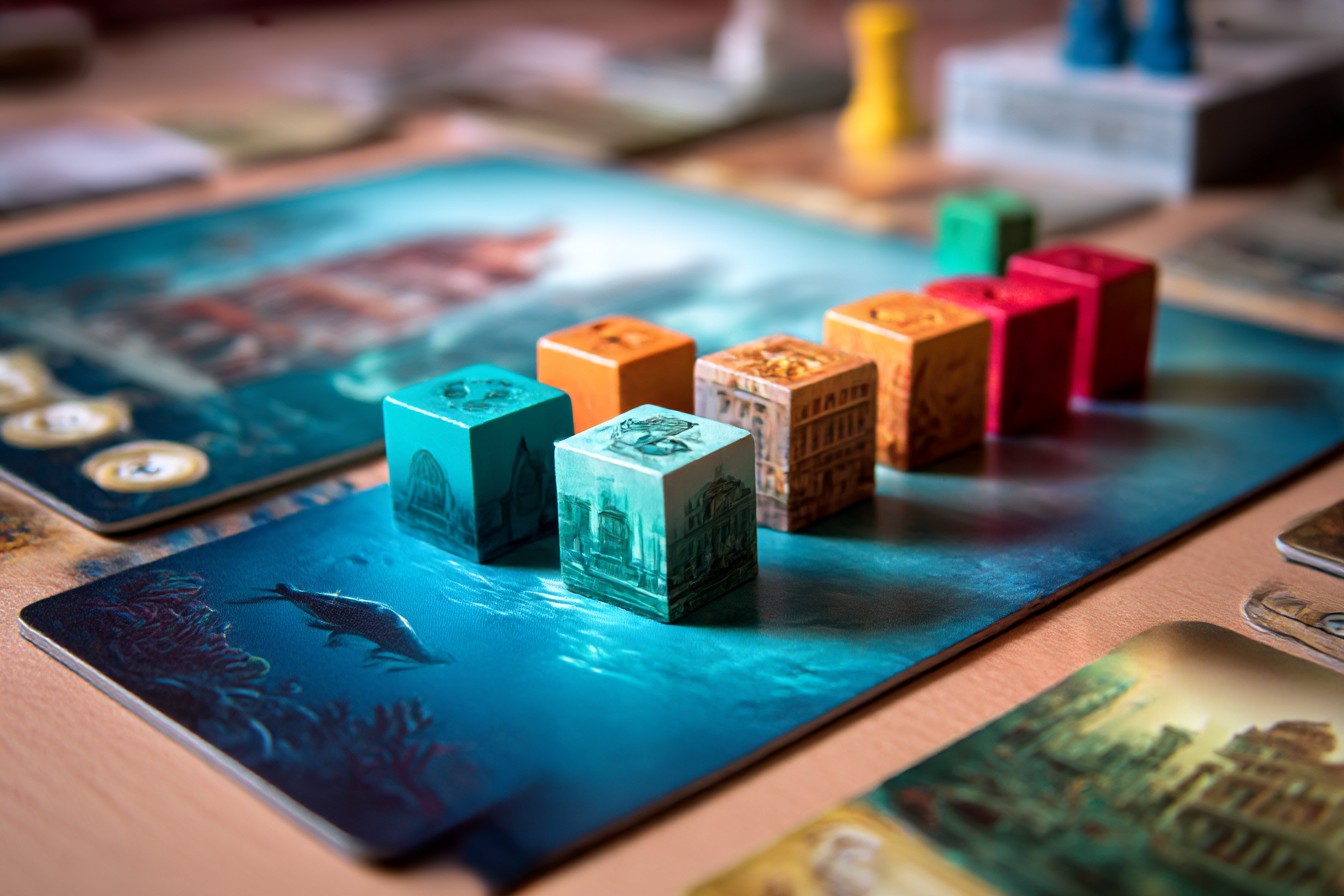
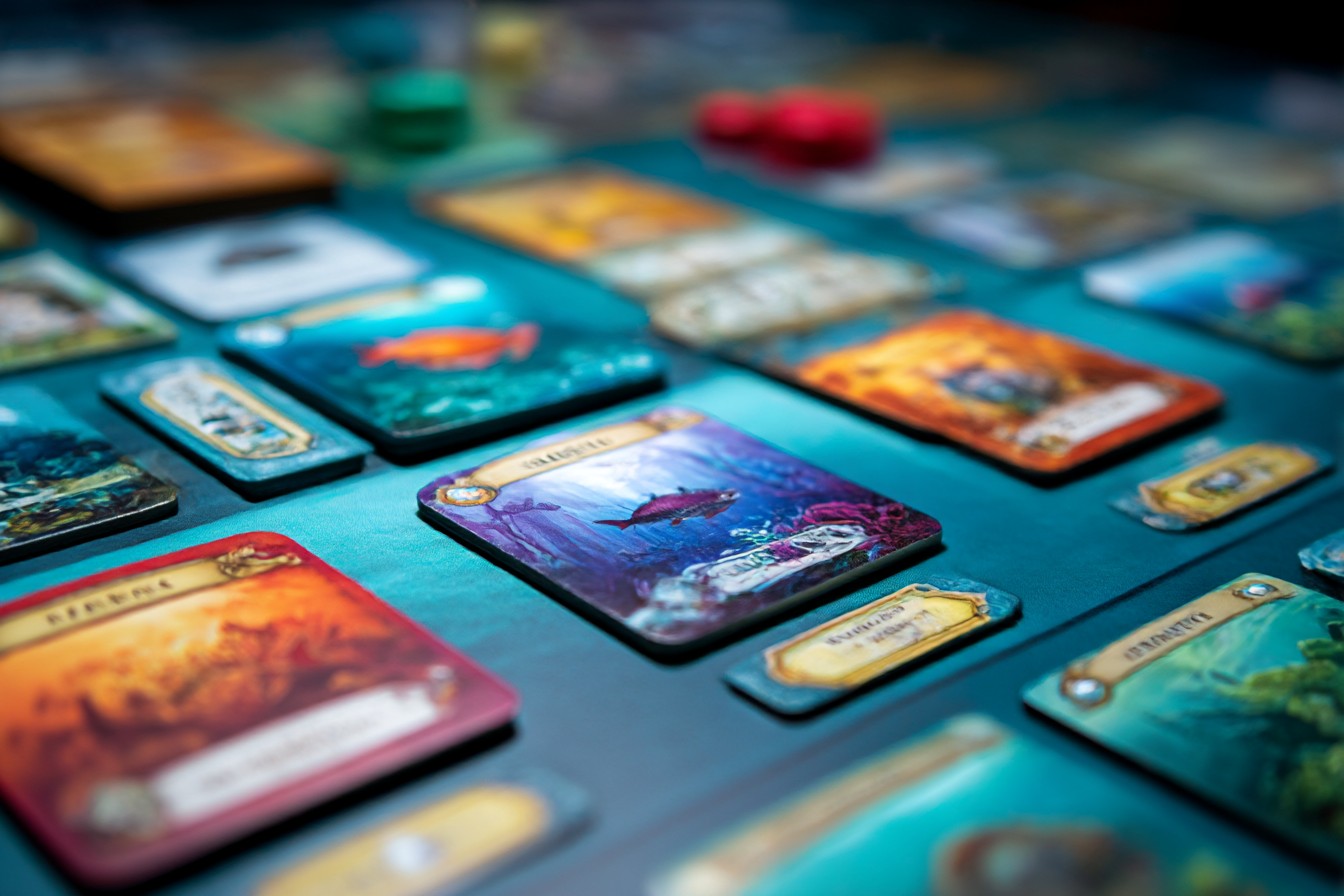
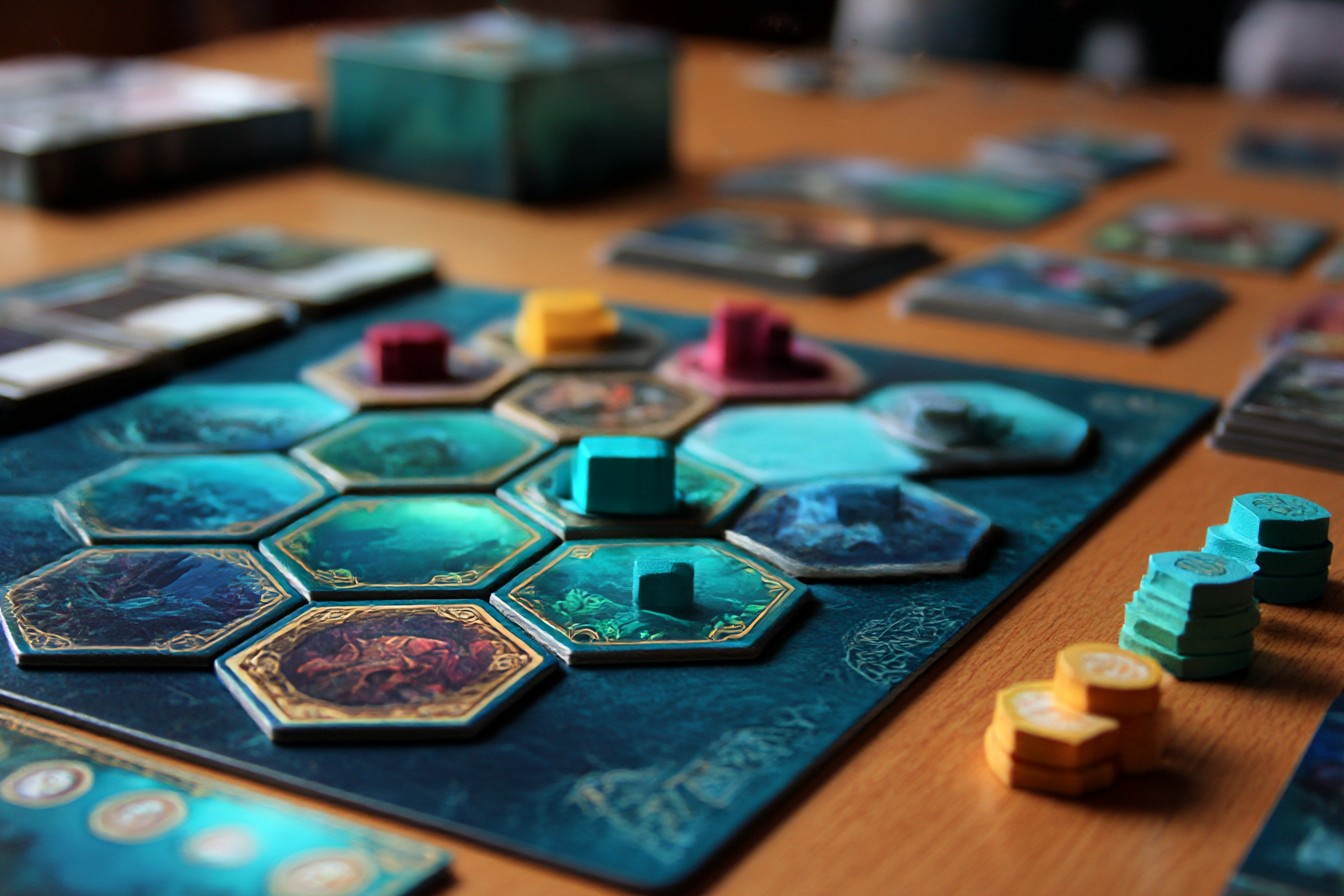
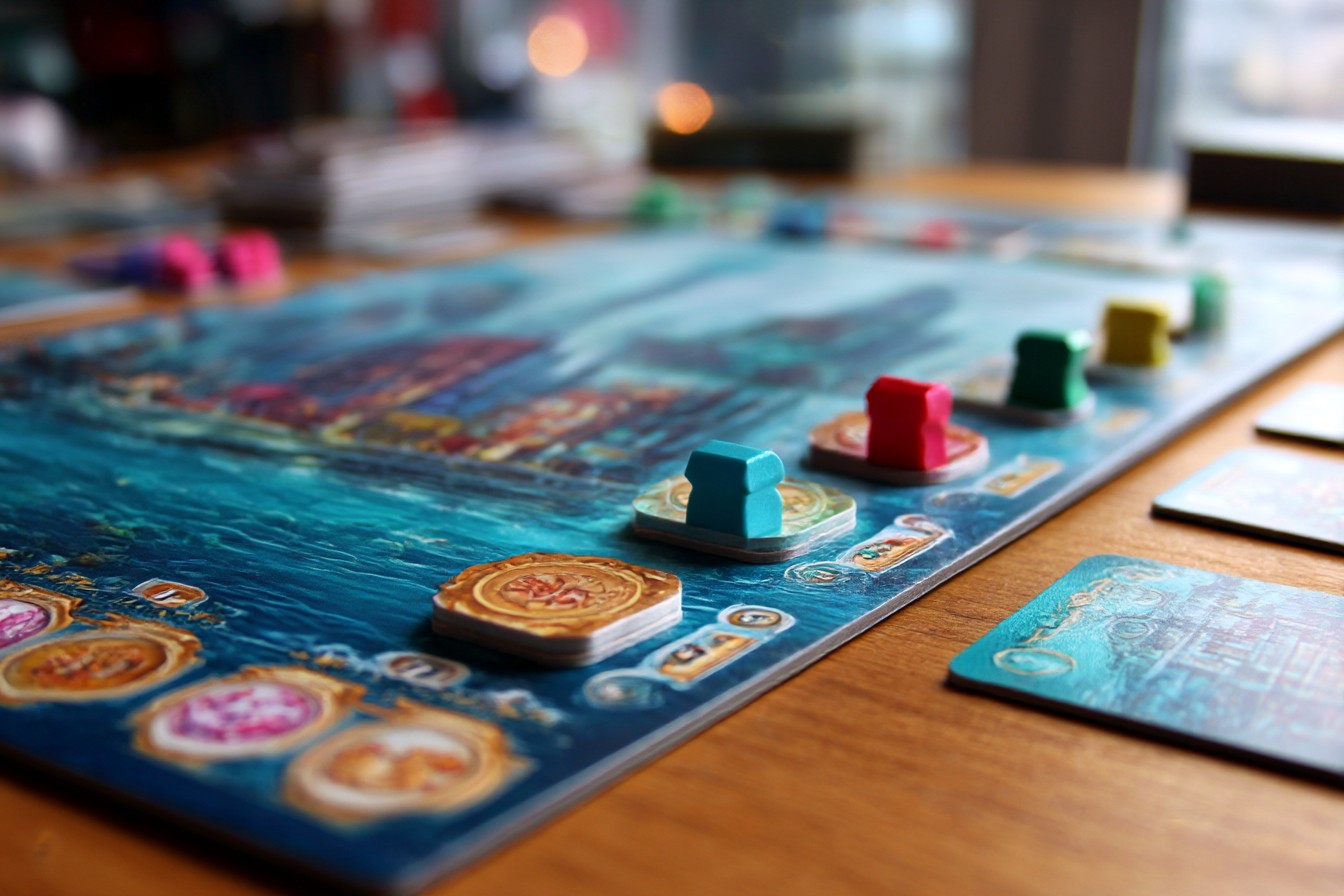
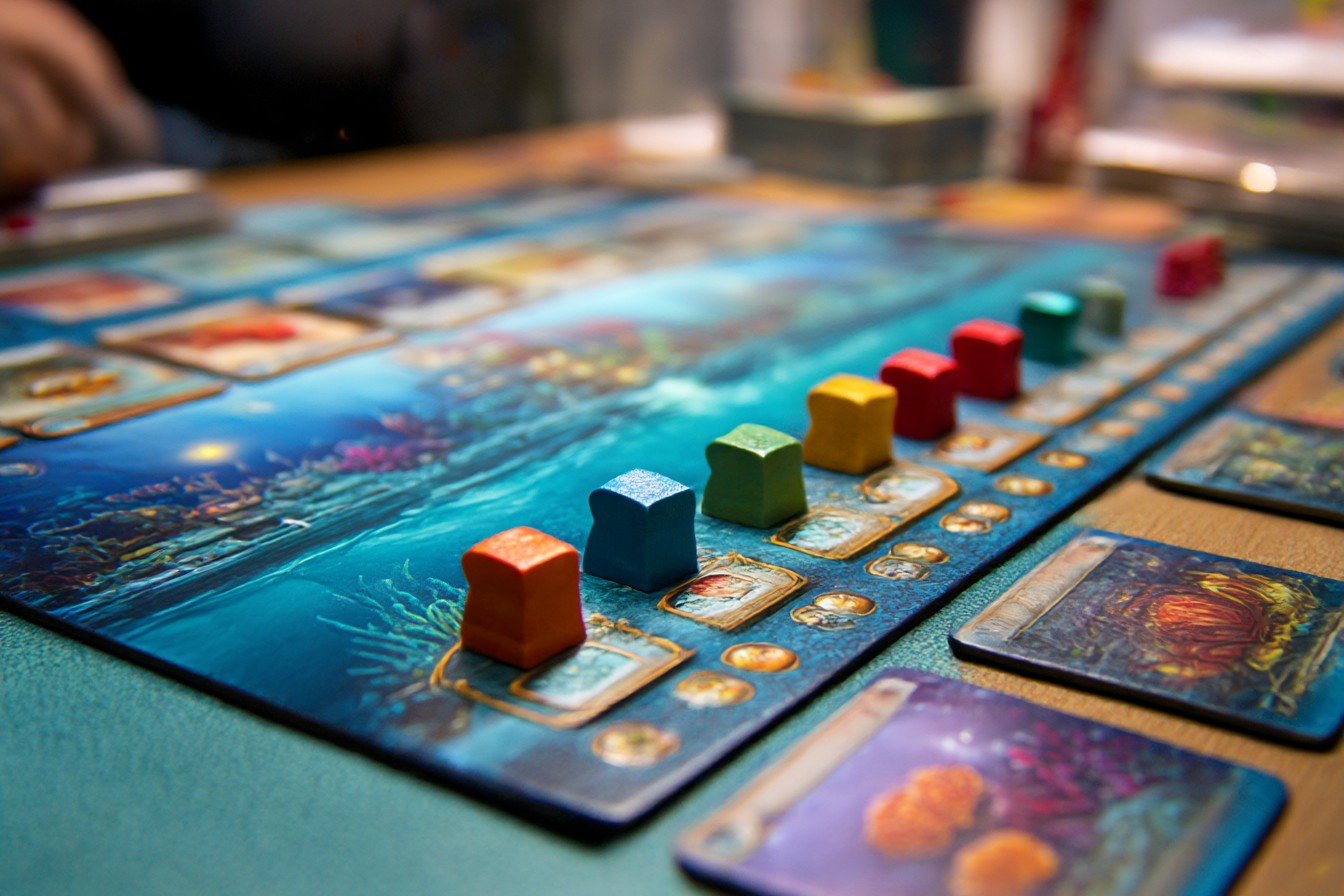
Leave a Reply